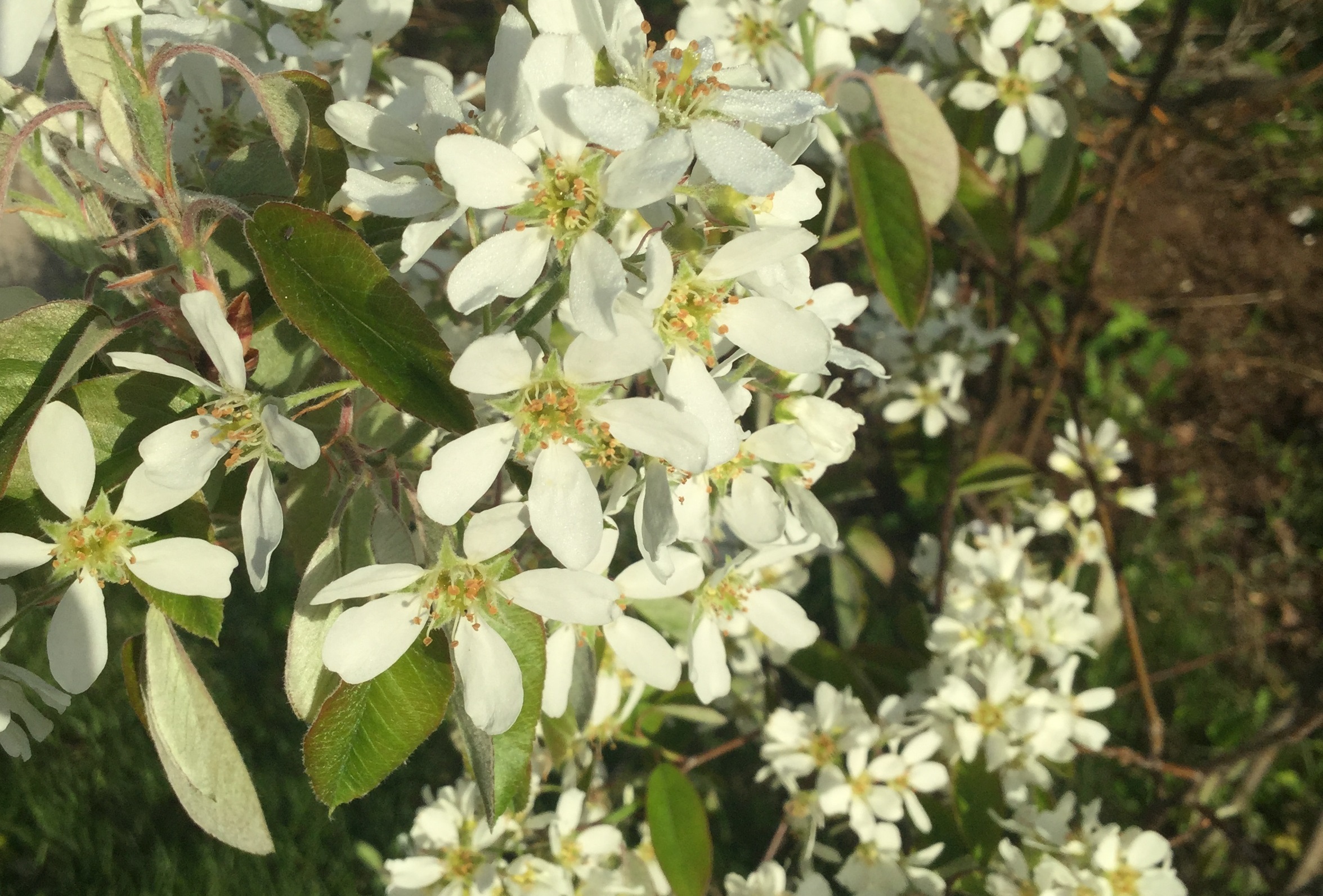The Wrack
The Wrack is the Wells Reserve blog, our collective logbook on the web.
The Wrack is the Wells Reserve blog, our collective logbook on the web.
Amelanchier is a lovely native shrub with many names. It comes into flower just as pussy willow blooms are going by.

"Shadbush" refers to a bloom time that coincides with shad running to spawn in local rivers. "Serviceberry" may come from sarvisberry, due to the similarity of its fruit to that of the sarvis tree (European mountain ash) or it may stem from colonial times when the spring thaw permitted settlers to bury brethren who had died over the winter. Amelanchier is also known as shadblow, juneberry, wild currant, sugar plum, and saskatoon, but if I could name this small tree I would call it So-Delicious-It’s-Sinful-Berry.
In June, shadbush bears sweet red berries that we are hard pressed to gather before the birds devour them. The berries can be used in pies, which requires patience due to their small size and tendency to be eaten during pie making. Native Americans mixed dried berries with buffalo meat to make pemmican, a staple that carried them through long winters.
Shadbush doesn’t bother with fine grooming, perfect shape, and show-stopping flowers. It is subtle and unrefined with graceful, fragrant, five-petaled, creamy white flowers that bloom on bare twigs. The tree’s muted gray bark and light green-gray leaves give it an ethereal glow in a light breeze.
Those leaves are an important food source for larvae of many moths and butterflies, including the viceroy.
Shadbush is a great plant for the garden, adding height and all-season interest to the landscape. It grows naturally in moist areas, but easily adapts to a wide range of soils and conditions. Tolerating sun to part shade, it grows from 10 to 40 feet, depending on the species. Fall color can be golden yellow, orange, red, or a combination.
This plant is easily grown from fresh seed that has been separated from ripe berries and sown in pots placed outdoors for the winter. Seed sown this way will usually germinate the following spring. Amelanchier seeds can also be planted dry, which may delay germination.
Whichever way you choose to start your plants, you will be rewarded with a treat for your eyes, nose, and taste buds. Growing shadbush, as with other native plants, is an exercise in patience and observation but well worth the time and effort.
Shadbush is found along most of our trails, especially on the shrubby edges of fields. Examples are also found in the native plant border and along the walkway in front of the garages.